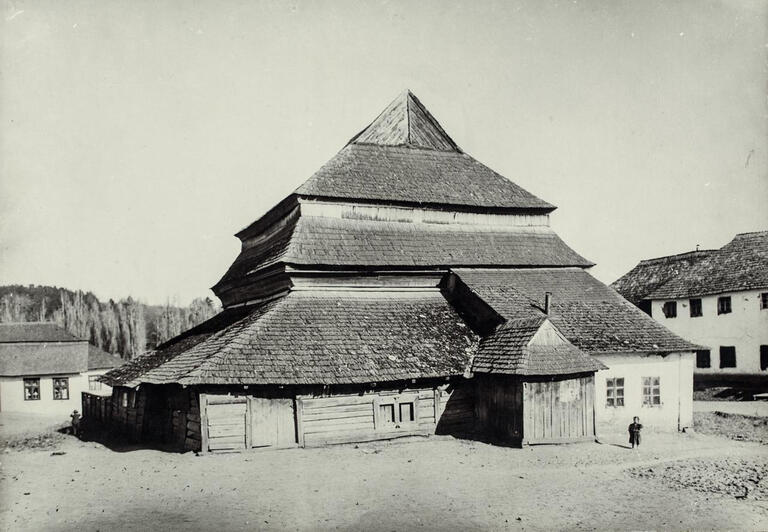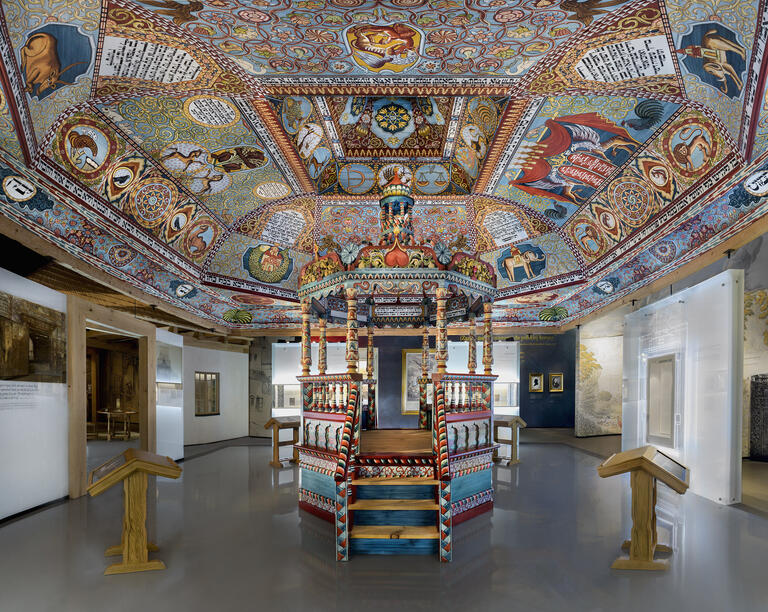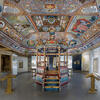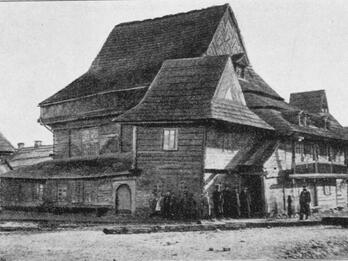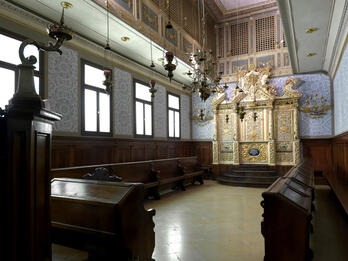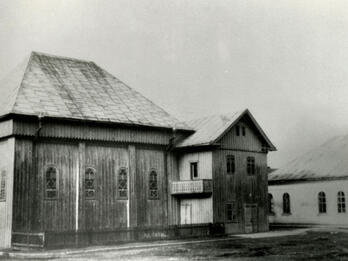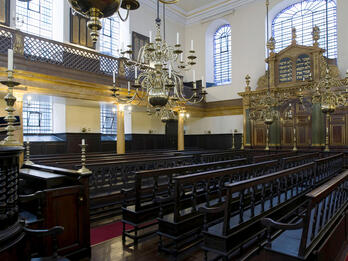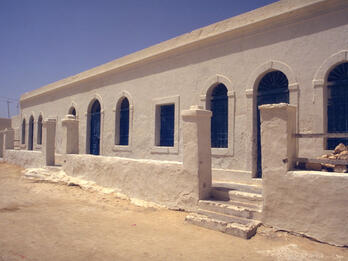Synagogue (Gwoździec, Poland)
The wooden synagogue in Gwoździec, eastern Galicia (modern-day Poland), was one of more than two hundred wooden synagogues that existed in Poland before World War II. Wooden synagogues were a distinctive style of vernacular architecture that first developed in the lands of the Polish-Lithuanian Commonwealth in the sixteenth century and then flourished in the seventeenth and eighteenth centuries. Such synagogues were popular because of the low cost and great availability of wood. Built in the mid- to late seventeenth century (some date the structure to 1640, although inscriptions inside it and at the entrance record the years 1686 and 1717 respectively), the Gwoździec Synagogue is fifteen meters (nearly fifty feet) high with a double roof. Inside the humble wooden structure is a richly decorated interior. The walls and ceiling of the stepped vault above the prayer hall are covered in murals containing floral patterns, zoological motifs, and text panels surrounded by borders. According to inscriptions inside the synagogue, Isaac Ber and his son painted the walls in the mid-17th century, and Isaac ben Judah Leib ha-Kohen and Isaac ben Mordechai Lisnicki completed the painting of the cupola in 1729. Although this synagogue was destroyed in the Holocaust, like almost all wooden synagogues, artists and scholars created a reconstruction based on extensive documentation from the late nineteenth and early twentieth centuries (a documentary film, Raise the Roof, followed this project).
Credits
-
History and Art Collection / Alamy Stock Photo.
-
Magdalena Starowieyska and Dariusz Golik / Wikimedia, from Museum of the History of Polish Jews, Museum_of_the_History_of_Polish_Jews_in_Warsaw_Main_exhibition_Gwoździec_synagogue.jpg. Licensed under (CC BY-SA 3.0).
Published in: The Posen Library of Jewish Culture and Civilization, vol. 5.


